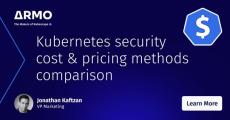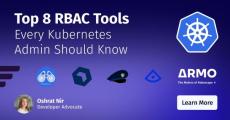- January 2025 (5)
- December 2024 (9)
- November 2024 (3)
- October 2024 (3)
- September 2024 (6)
- August 2024 (5)
- July 2024 (4)
- June 2024 (4)
- May 2024 (2)
- April 2024 (3)
- March 2024 (4)
- February 2024 (4)
- January 2024 (7)
- December 2023 (5)
- November 2023 (5)
- October 2023 (3)
- September 2023 (5)
- August 2023 (6)
- July 2023 (4)
- June 2023 (4)
- May 2023 (4)
- April 2023 (2)
- March 2023 (4)
- February 2023 (3)
- January 2023 (2)
- December 2022 (4)
- November 2022 (5)
- October 2022 (3)
- September 2022 (4)
- August 2022 (2)
- July 2022 (4)
- June 2022 (6)
- May 2022 (1)
- April 2022 (4)
- March 2022 (4)
- February 2022 (4)
- January 2022 (4)
- December 2021 (6)
- November 2021 (1)
- October 2021 (1)
- September 2021 (2)
- August 2021 (2)
- July 2021 (3)
- April 2021 (3)
- February 2021 (1)
- December 2020 (1)
- October 2020 (1)
- September 2020 (1)
- July 2020 (2)
- June 2020 (1)
- March 2020 (1)
- February 2020 (1)
- January 2020 (4)
- December 2019 (2)
ARMO closes the gap between development and security, giving development, DevOps, and DevSecOps the flexibility and ease to ensure high grade security and data protection no matter the environment – cloud native, hybrid, or legacy.
ARMO is driving a paradigm shift in the way companies protect their cloud native and hybrid environments. We help companies move from a “close-the-hole-in-the-bucket” model, installing firewalls, defining access control lists, etc. to a streamlined DevOps- and DevSecOps led model in which environments are deployed with inherent zero-trust.
Security at the Speed of DevOps:
- Runtime workload identity and protection: Identifies workloads based on application code analysis, creating cryptographic signatures based on Code DNA to prevent unauthorized code from running in the environment to access and exfiltrate protected data. The patent-pending technology signs and validates workloads in runtime throughout the entire workload lifecycle.
- Transparent data encryption: Transparent data encryption – keyless encryption – robustly and uniformly encrypts and protects files, objects, and properties, requiring no application changes, service downtime, or impact on functionality. It eases the adoption of encryption by removing the complexity of key management and providing an out-of-the-box solution for key protection in use, key rotations, and disaster recover procedures.
- Identity-based communication tunneling: Transparent communication tunneling ensures only authorized and validated applications and services can communicate. Even if attackers steal valid access credentials, they are useless because the malicious code will be unsigned. Create API access polices to build identity-based policies and enforce correct workload behaviors.
- Application-specific secret protection: Application-specific protection of secrets ensures cryptographic binding between continuously validated specific workload identities and their confidential data, delivering complete protection against access by unauthorized applications.
- Visibility & compliance: Visibility and compliance monitoring provide granular details about workloads and running environments, including individual processes, file names and locations, open listening ports, actual connections, mapped volumes, opened files, process privilege levels, connections to external services, and more. Alerts can be used for continuous compliance verification.
Bringing Together Run-Time Workload And Data Protection To Seamlessly Establish Identity Based, Zero-Trust Service-To-Service Control Planes.











